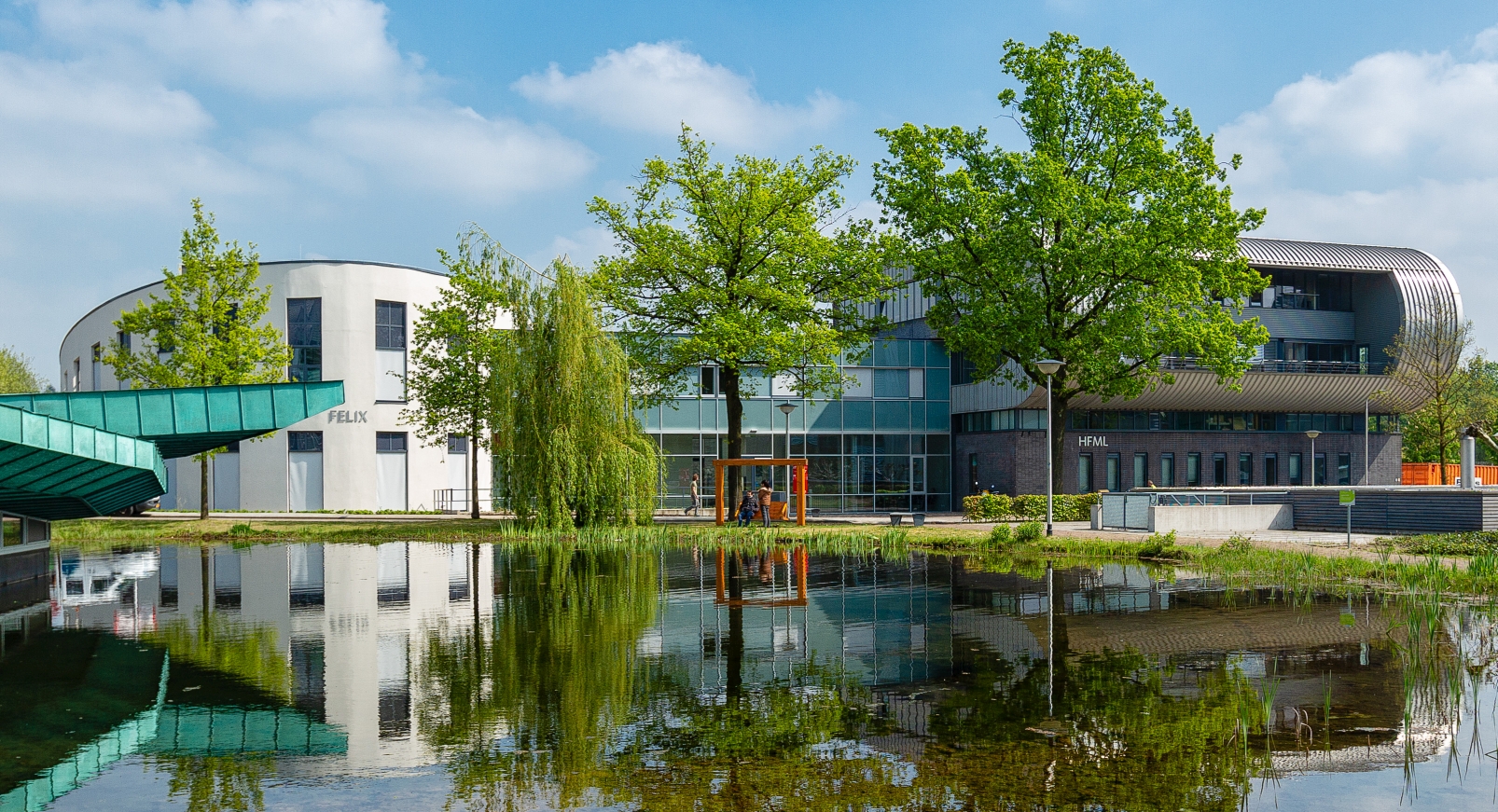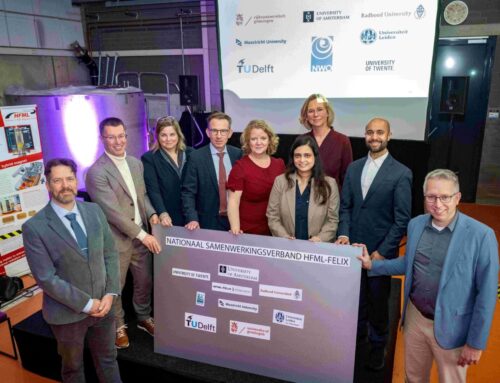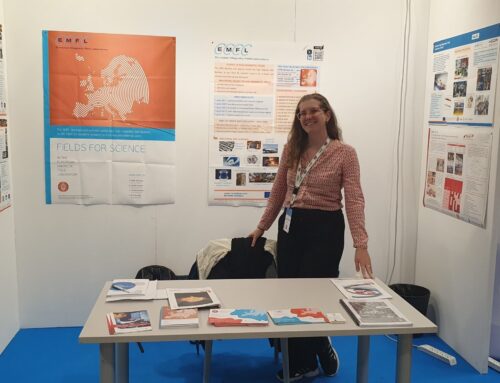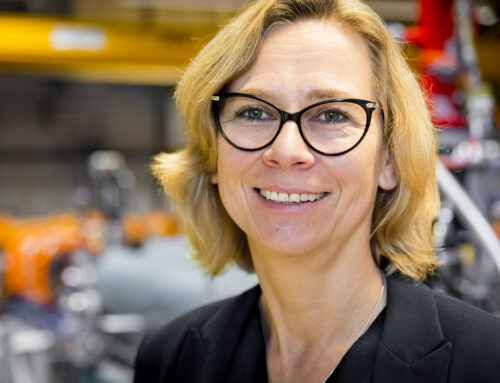The combined building of the HFML and the FELIX Laboratory has been officially opened on July 8, 2019. Ingrid van Engelshoven, Minister of Education, Culture and Science, officiated the opening.

From left to right: Prof. Han van Krieken (Rector, RU), Dr. Britta Redlich (Director FELIX Laboratory), Minister Ingrid van Engelshoven (OCW), Prof. Peter Christianen (Director HFML), Prof. Lutgarde Buydens (Dean FNWI, RU), Prof. Niek Lopes Cardozo (NWO), Dr. Wilma de Koning (University Board, RU), Dr. Iwan Holleman (Management Director, RU), Prof. Daniël Wigboldus (President of the University Board, RU).
The very powerful magnets and free-electron lasers of the large-scale infrastructures draw scientists from around the world who want to study the properties and functions of matter. No other facility offers both static high magnetic fields and intensive (far) infrared light at a single location.

The combined HFML-FELIX building.
Groundbreaking discoveries are already made in the separate laboratories. Using the powerful magnetic field at HFML, Konstantin Novoselov and Andrei Geim were the first to discover the 2D material graphene. A Nobel Prize-winning, a fundamental discovery that paved the way to new types of electronics. The strong laser light at FELIX plays a crucial role in the mapping of chemical processes and molecular structures, among others. An example is the study into new biomarkers that help physicians in the tracking of various diseases.
The laser light reaches the magnets from the laser basement through an 86-meter vacuum pipe, in which it is directed by 41 gilded mirrors. “Getting this to work was a huge challenge,” says HFML Director Peter Christianen. “It is a new combination of technology, and we, therefore, had to come up with everything ourselves, make it or have it made, test it, double check: am I measuring what I want to measure, or do I have noise on the line? For example, once it was in the magnetic field, the helium that we use to cool our experiments had an unintentional interaction with the photons of the laser.”
“With this combination of our infrastructure, we enter an entirely new scientific domain. It is impossible to predict which breakthroughs we will make. One could compare this with a new building in which all doors are closed. One magnetic field strength combined with one light frequency can open one door, thus allowing us to see what is behind it. We now have the unique opportunity to change both the magnetic field strength and the frequency of the light at will. This will allow us to open all doors at the same time,” says FELIX Director Britta Redlich.
It is a certainty that the combination of HFML and FELIX will yield interesting discoveries.






